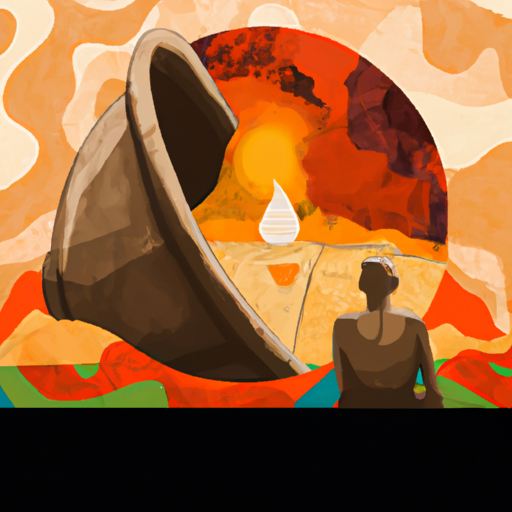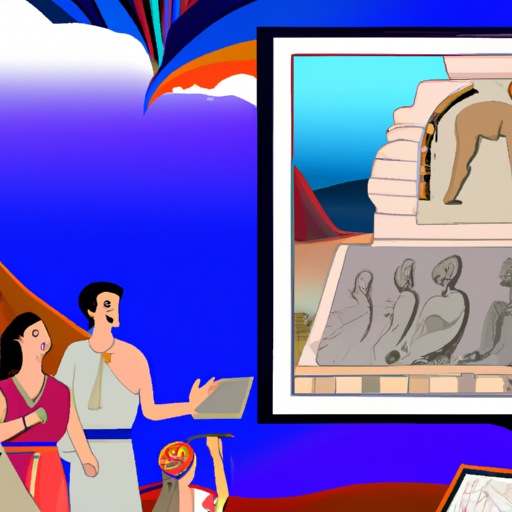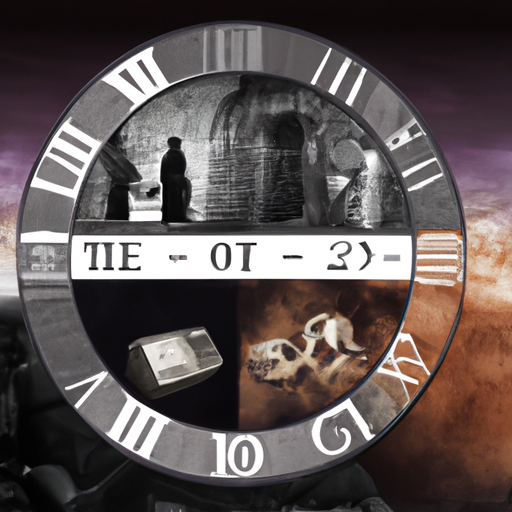A Historical Look at the Aromas of Victorian Streets
Unearth the past of Victorian byways and find out what fragrances they were imbued with! Delve into a world of nostalgia, as you explore the olfactory ambiance of these ancient thoroughfares. Unravel the mystery of what aromas filled the air in times gone by, and take a journey through time to uncover their secrets.

In a crisis, people will turn to plants once again for both food and medicine.
And there are some plants that will vanish faster than all others.
So the only way to make sure you have them when you need them is to grow them in your own backyard.
P.S. However, there is a limited number of these seeds and the demand is huge–no wonder, with all that’s happening in the world right now. Click here to see if there are any left for you!
Take a leap through time and uncover the secrets of the forgotten byways of Victorian days. Unearth what fragrances filled the air during this era and how they were used to add atmosphere to everyday life. From the sweet smell of freshly cut grass and blooming flowers, to the smoky aroma of coal fires, delve into the olfactory ambiance of these ancient streets. Discover what aromas were popular during this period and explore the history that lies behind them.
.
Introduction

The streets of Victorian cities were a sensory experience. An amalgamation of aromas, both delightful and noxious, filled the air. The smell of horse-drawn carriages was ever-present, along with the acrid smoke from coal fires used to heat homes. Street vendors’ carts wafted the smell of cooked food while fashionable ladies added a hint of floral perfumes. Together these smells created an olfactory experience that is now lost in time.
– Examining the History of Victorian Street Smells
An exploration of the fragrances of Victorian streets can offer a window into the lives of people living in that era. As cities grew and new technologies and industries came to be, populations increased and led to more pollution. Smoke from coal fires, horse-drawn carriages, and factories filled the air in London with an often-unpleasant aroma which was compounded by odors from tanneries, breweries, and other businesses. In residential areas, sanitation practices were poor resulting in open sewers running through neighborhoods and animal waste left in the streets; on warm days these smells combined with those of nearby shops or homes baking bread or roasting meat.
The smell of flowers also had a presence in Victorian street life; florists sold bouquets while private gardens provided a pleasant scent for those who could afford it. Flowers were not only enjoyed for their aroma but also served as symbols of status among wealthier classes.
By examining the history of smells on Victorian streets, we gain insight into how people lived during this period as well as how their environment influenced them. From smog-filled skies to flower-filled gardens, these scents have shaped our understanding of what life was like in Britain during this time period.
– Investigating the Common Scents of th Century Streets
The 20th century streets were a whirlwind of aromas, some delightful and some not so much. Exploring these smells can give us a unique peek into the history of that time. From the sweet scents of blooms to the stench of horse-drawn carriages, each whiff conveys a narrative about what life was like then.
In cities, street merchants sold foodstuffs such as roasted chestnuts and hot dogs which left behind their own unmistakable fragrances. The odor of coal burning in fireplaces and wood stoves was also a familiar scent in many communities. Plus, there were whiffs from factories that processed leather, rubber, and other materials.
On the fringes of town, farmers grew crops such as wheat, oats, corn, and hay which produced an earthy aroma when cut or harvested. The smell from apple orchards was also popular in rural areas during this era.
The odors from horses pulling carriages through town were especially distinct. As horses trotted down cobblestone streets, they left behind a combination of sweat and manure that lingered for hours afterwards.
Overall, exploring the common scents of 20th century streets can give us an exciting look into what life was like back then. From the perfumes of flowers to the stenches from horse-drawn carriages, each aroma offers us a glimpse into our past and grants us an admiration for how far we have come since then.
– The Impact of Industrialization on Victorian Street Odors
The Victorian era saw a dramatic transformation of the scents that filled city streets, brought about by the industrialization of society. New technologies and factories changed the air quality for the worse, with smoke from burning coal and other materials creating a dense smog that lingered in the atmosphere. Sewage systems overflowing into streets added to this putrid odor, as did horse manure left on roads and sidewalks due to its use as transportation. Even rural areas were affected by increased pollution from mills and factories, with sulfur dioxide becoming particularly pervasive. Additionally, an ever-growing population meant more waste products such as food scraps and garbage which further contributed to an unbearable smell.
Industrialization had a profoundly negative effect on street odors during this period, making city life unpleasant for citizens. Fortunately, modern technology has helped reduce these odors drastically so that people can now enjoy cleaner air than ever before.
– How Sanitation Practices Influenced Victorian Street Aromas
Amidst a period of progress and transformation, the Victorian era was marked by a stark contrast in sanitation practices that often left its cities’ streets permeated with the stench of sewage and other putrid smells. This article will delve into how these practices affected the aromas of Victorian streets.
In the mid-1800s, Britain implemented more stringent regulations for waste management and disposal, including the implementation of sewer systems designed to channel human waste away from populated areas. However, these sewers were not always effective and could overflow or back up during periods of heavy rain, resulting in an increase in noisome odors on streets. Moreover, privies (outdoor toilets) were commonplace in poorer areas without indoor plumbing; their proximity to dwellings and businesses caused a strong smell that could linger for days or weeks until emptied by night soil collectors. In addition, due to inadequate drainage systems, open cesspits (large underground pits used for storing raw sewage) were present near many homes and businesses; if not properly maintained or sealed off from the public, they would emit noxious fumes into the air.
To reduce this issue, certain cities introduced new regulations such as banning open fires on streets and prohibiting horse-drawn carriages from operating at night when their smoke would be more visible. Additionally, some cities initiated regular street cleaning campaigns which helped diminish dirt and grime that could contribute to bad smells in certain areas.
Altogether, sanitation practices during this period had a pronounced effect on street aromas throughout Britain’s cities. Although some improvements were made over time with regards to waste management and air pollution control, it is clear that foul odors still pervaded many streets due to overflowing sewers, outdoor privies and cesspits releasing noxious fumes if not properly managed or closed off from public view.
– Uncovering the Forgotten Fragrances from Victorian Streets
As the nineteenth century dawned, its progress and advancement was undeniable, yet one of its most subtle secrets had been forgotten – the fragrances that filled the air. From freshly-baked bread to coal smoke, a variety of scents permeated the streets, now lost in time. But with modern technology, these forgotten aromas can be uncovered to provide us with an insight into this captivating period.
Through data from historical records and scientific techniques, researchers are able to identify and recreate these smells. By analyzing air samples taken from Victorian streets, they can determine which scents were present during this time. Then, through the use of essential oils or synthetic compounds, precise recreations are created.
These fragrances can be used for various purposes today. They can be used to create an authentic atmosphere in films or plays set in this era; they could also be incorporated into perfumes or aromatherapy treatments to evoke memories or emotions associated with it.
In uncovering these forgotten aromas from Victorian streets, we gain a greater understanding of this significant period in history – allowing us to explore its many different aspects in more detail.
conclusion

The Victorian era may have been a time of industrial progress, but it was also one of stench and malodorousness. As cities grew in population and coal burning for heating and cooking intensified, the streets were filled with noxious fumes that could be smelt from afar. Not only did these smells come from coal, but also from the lack of proper sanitation systems, resulting in sewage and garbage odors to permeate the air. It’s safe to say that one’s experience on Victorian streets was far from pleasant, with the pungent aromas making it an unpleasant place to be.
.
Some questions with answers
Q1: What did Victorian streets smell like?
A1: Victorian streets smelled of horse manure, sewage and smoke from coal fires.
Q2: How long did the Victorians suffer with these smells?
A2: The Victorians lived with these smells for many years until the introduction of public sanitation in the late 19th century.
Q3: Did they have any other sources of bad odors?
A3: Yes, other sources of bad odors included open sewers, polluted rivers and industrial waste.






